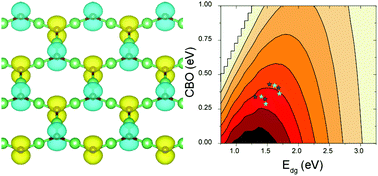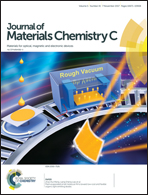Intrinsic magnetism and electronic structure of graphene-like Be3C2 nanoribbons and their Si, Ge analogues: a computational study†
Abstract
Utilizing first-principle calculations, we perform a systematic study on the electronic and magnetic properties of recently proposed graphene-like Be3C2 nanostructures. We found that although the Be3C2 nanosheet exhibits a Dirac feature in the nonmagnetic state, an intrinsic antiferromagnetism is preferred and it opens a sizeable band gap of 2.75 eV at the Dirac point. The edge stabilities of Be3C2 nanoribbons (Be3C2NRs) are revealed in detail, and indicate that the armchair and zigzag edges with Be- and C-terminations are all possibly obtained by careful control of the H and Be chemical potentials. Akin to the Be3C2 nanosheet, these Be3C2NRs are also antiferromagnetic semiconductors regardless of the edge shapes and terminations, whose band gaps are all insensitive to the ribbon width. Peculiar spintronic behaviors can be induced in the zigzag Be3C2NRs by electric fields, which can transform the Be-terminated nanoribbons into half-metals and turn the C-terminated ones into bipolar semiconductors or even spin-gapless-semiconductors. Similar electronic structures are also present in Be3Si2 and Be3Ge2 nanostructures, which are antiferromagnetic semiconductors with smaller band gaps. The valence and conduction band edges of Be3C2NRs straddle the redox potentials of water, and are suitable for photocatalytic water splitting, while for the Be3Si2 and Be3Ge2 nanostructures, the band edges could form a type-II band alignment with the MoS2 nanosheet, for which the combined hetero-nanostructures possess a high power conversion efficiency of up to 14–17% for photovoltaic solar cells. Our study demonstrates that beryllium group-IV nanostructures exhibit versatile electronic and magnetic properties, which endow them with many potential applications in nano-electrics and nano-energy devices.

- This article is part of the themed collection: 2017 Journal of Materials Chemistry C HOT Papers


 Please wait while we load your content...
Please wait while we load your content...